What Is Limescale? (And How to Get Rid of It at Home)
-
Codee Chessher
- Last updated:
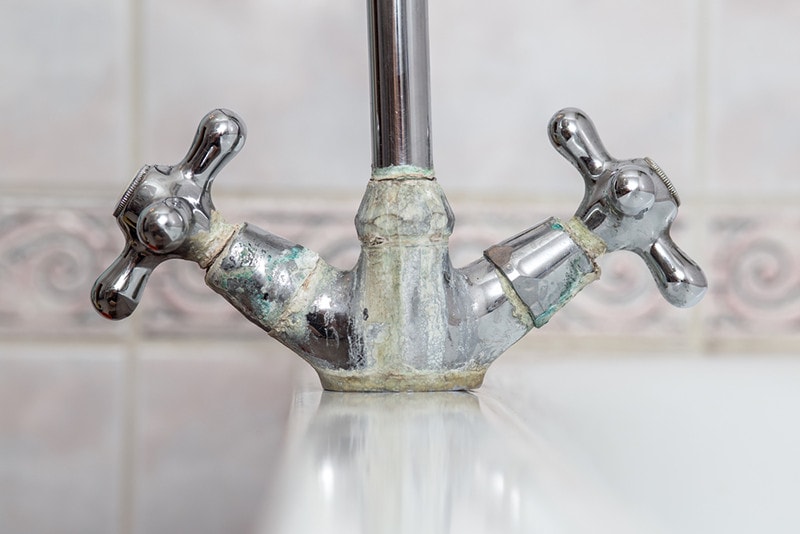
Limescale is an unsightly scourge anywhere you find hard water, even if it’s mostly benign. Most people have seen it, fewer know what it’s called, and even fewer know exactly what it is or how to get rid of it at home. If you have a limescale problem in your household, we have all the info you need. Read on for the details.
What Is Limescale and How Does It Work?
Limescale is a tough, chalky deposit mainly composed of calcium carbonate, and you’ll sometimes hear it called calcium buildup or calcium scale. Despite the name, limescale also commonly contains magnesium and traces of other compounds. Depending on the other stuff present, the limescale could look different—we’ll elaborate on that a bit further down.
Limescale comes from hard water, meaning water with a high concentration of calcium and/or magnesium. When that water evaporates, the solids are left behind as an off-white chalk-like deposit. Generally speaking, harder water will leave behind more residue than water that’s just a bit heavy on calcium. Limescale is also formed when hard water is heated.
You’ll mainly find limescale inside or on water-related machinery and plumbing, especially parts that heat water. Let’s highlight a few places you may find limescale around your house so you can be more aware.
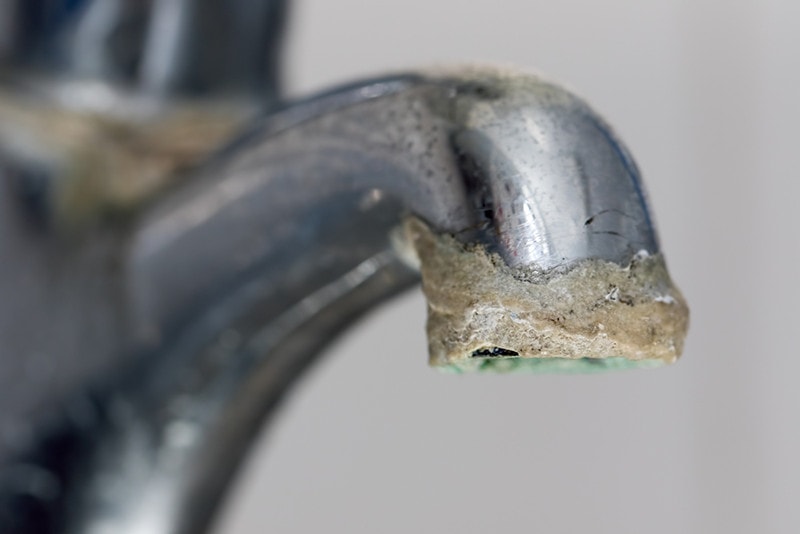
- Metal plumbing and fixtures
- Glass surfaces where water is used, mainly the kitchen & bathroom
- Hot water heaters
- Boilers
Whether you’ll ever see limescale and how often is ultimately dependent on your local water treatment facilities and the local water quality. Lower-quality water or poor treatment is more likely to leave behind limescale on your plumbing and elsewhere.
What Does Limescale Look Like?
Limescale is largely made of calcium carbonate, but other contaminants in your water can change its appearance. If you’re not seeing white buildup but other weird stuff on your water fixtures, it could be an offshoot of limescale. It is most often white and chalky, but here are a few other things you might see that indicate you have limescale:
- Powdery white or off-white residue
- Thick, chunky buildup
- Brown residue or buildup, which indicates iron or other metals in the water
- Green residue or buildup, which is caused by a high concentration of copper in your water
- Black residue or buildup caused by high levels of manganese in the water supply
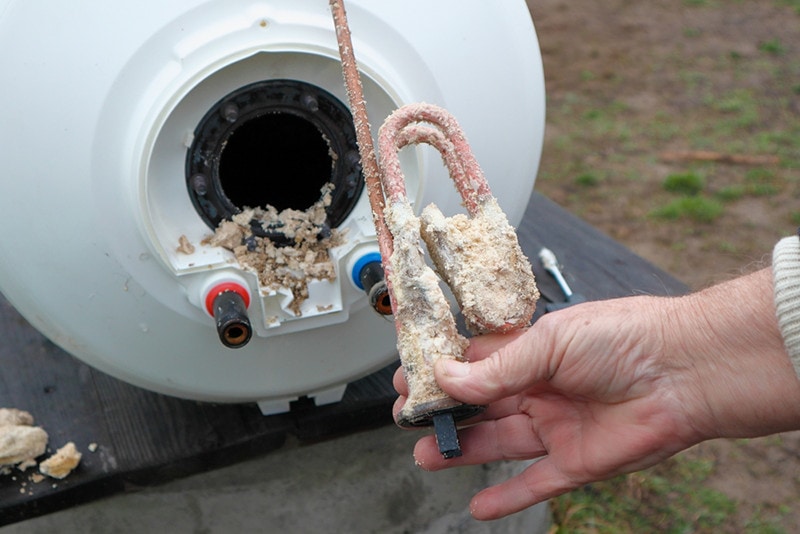
How to Get Rid of Limescale at Home
Getting rid of limescale will go a long way toward keeping your pipes and water fixtures clean and in good shape, but it’s hard to tell the best way to go about it. Thankfully, removing limescale is a pretty straightforward process. The bad news is that preventing it is harder.
You can get rid of limescale by taking advantage of chemical reactions.
- Mix together water and white vinegar in a 1:1 ratio.
- Apply this solution directly to thick limescale or spritz with a spray bottle on thin residue.
- Wipe away the residue with a clean cloth.
- For thicker buildup, use a stiff nylon brush to slowly loosen and remove debris.
Next, you want to prevent limescale from returning. This is really difficult, but there are some ways you can try. For best results, you can combine these methods unless specifically mentioned otherwise.
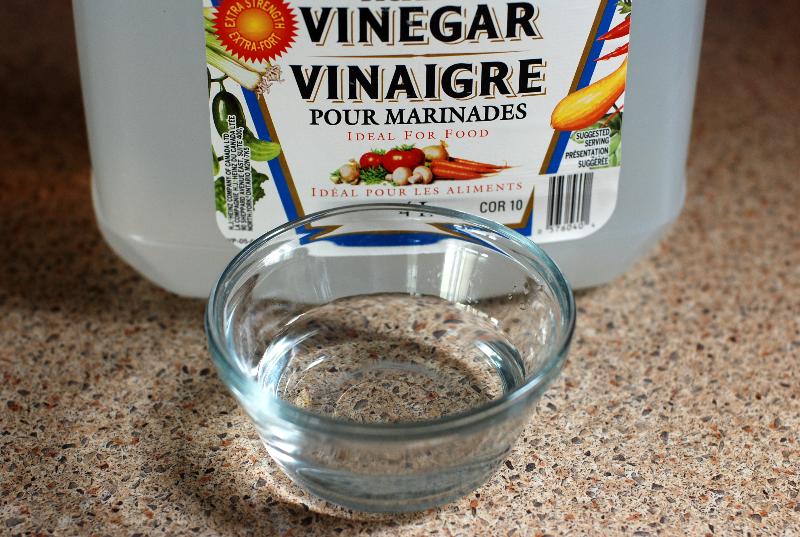
- Periodically wipe down water taps and showerheads with diluted lemon juice or white vinegar to slow down limescale accumulation.
- Consider investing in commercial descaling products.
- Keep your water-related appliances clean—kettles and dishwashers are especially vulnerable.
- For well water, treat your water with water softener tablets.
- Use tap filters for your water. This is not a permanent fix, but it helps a lot.
Why Is Limescale Bad?
Other than being very ugly, there are several reasons you want to deal with limescale ASAP. As you can imagine, chunks of calcium aren’t good for your health or your pipes. Check our more specific info down below.
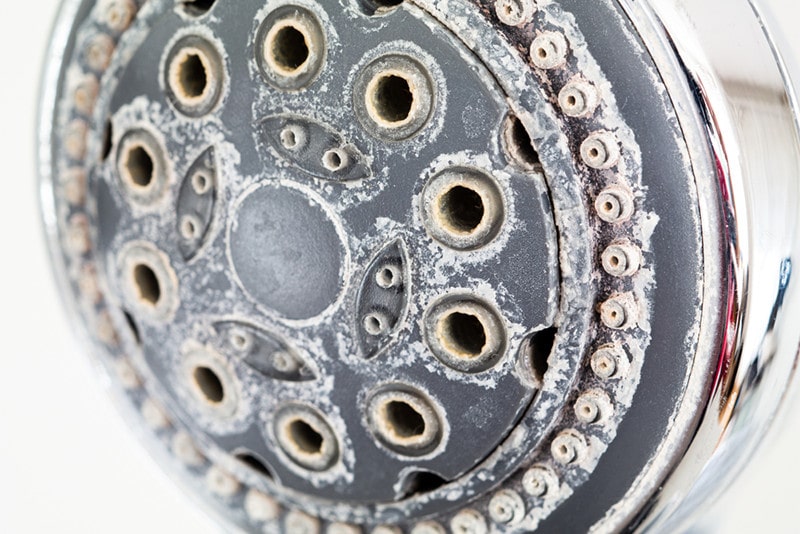
- Insulates pipes & appliances: limescale prevents pipes and taps from getting hot, meaning you use more power for your hot water
- Clogs taps & shower heads: anything that uses the local hard water will clog over time and even become unusable if the water is hard enough
- Reduces water pressure: built-up limescale can have the thumb-over-hose effect and cause water to spray, wasting water and potentially costing you money
- Negative health impacts: excessive limescale can affect your skin, teeth, and even digestive issues
- Creates a bacteria-friendly environment: bacteria can feed on limescale, literally breeding a new set of problems
Yes, limescale can affect your health too! It takes a serious systemic limescale problem to build up that much, but you should never hesitate if you begin to notice any out-of-place health symptoms.
Frequently Asked Questions (FAQs)
How Long Does It Take for Limescale to Build Up?
How fast limescale accumulates in your plumbing depends on how hard the water is in your area. How often you use your water, especially hot water, is relevant too, with more water usage increasing how fast limescale accumulates.

How Can I Tell if My Water Is Hard?
Limescale is the most obvious sign you have hard water, but not the only one. There are a few other telltale signs that your water has way too much calcium carbonate, so let’s go over some.
- Excessive soap scum after showering
- A filmy feeling after showering or washing hands
- Dishes don’t feel clean despite appearing clean
- Your laundry isn’t getting clean
- Your hair and skin feel dry after showering
What parts of the US have hard water?
Hard water isn’t limited to any region in the US, but there are a few places with harder water than average. The South and Southwestern US tend to have harder water, as well as the Midwest. Check out where your city lies on a hard water map to see if you’re at risk.
Conclusion
Limescale can cost you electricity and water, impact your health, and more. By regularly wiping water taps with lemon juice or vinegar, you can help stop limescale in its tracks before it clogs up your faucets with chalky buildup.
Featured Image Credit: Losonsky, Shutterstock
Contents


